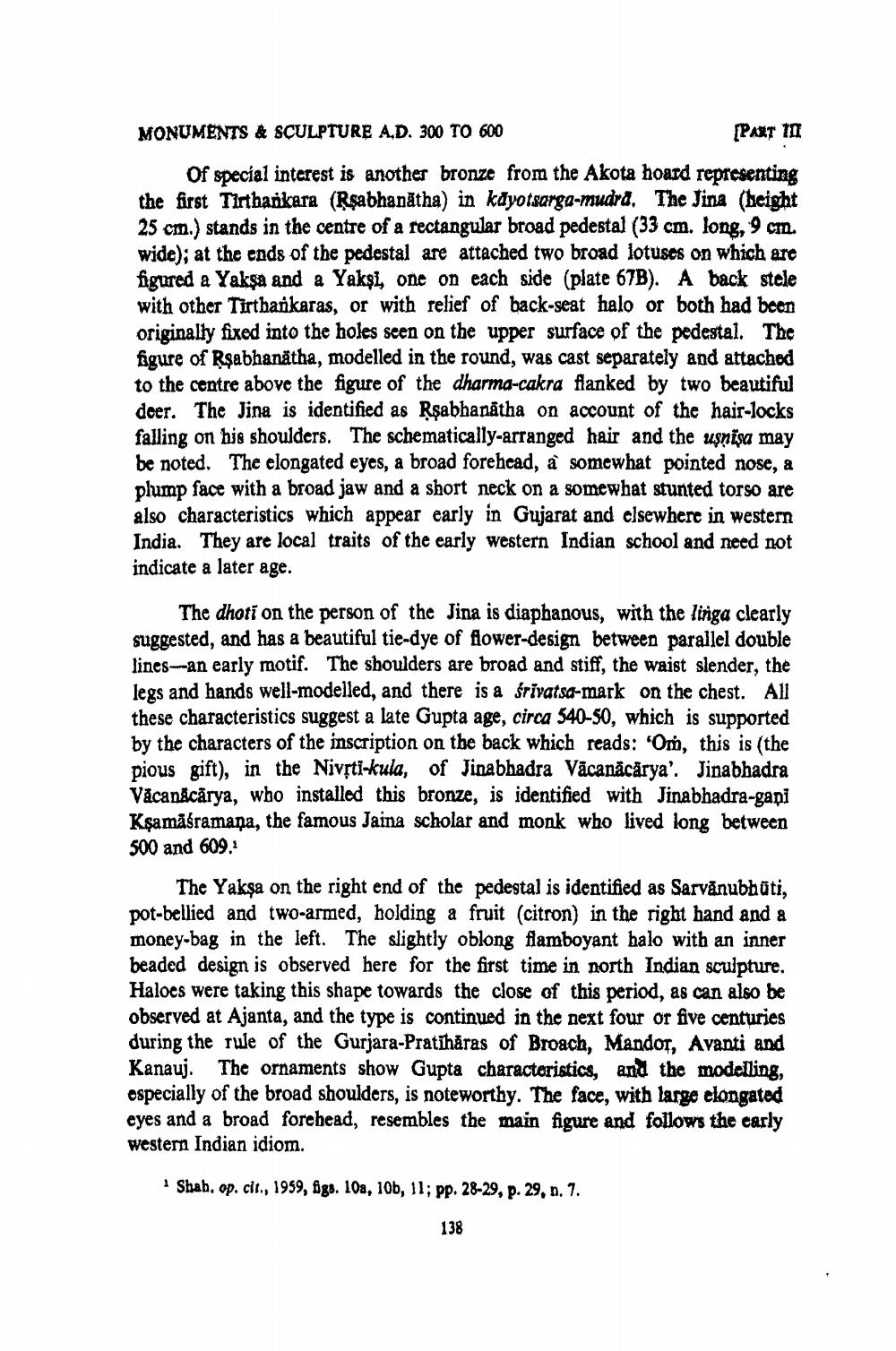________________
MONUMENTS & SCULPTURE A.D. 300 TO 600
[PART III
Of special interest is another bronze from the Akota hoard representing the first Tirthankara (Rṣabhanatha) in kayotsarga-mudra. The Jina (height 25 cm.) stands in the centre of a rectangular broad pedestal (33 cm. long, 9 cm. wide); at the ends of the pedestal are attached two broad lotuses on which are figured a Yakşa and a Yaksi, one on each side (plate 67B). A back stele with other Tirthankaras, or with relief of back-seat halo or both had been originally fixed into the holes seen on the upper surface of the pedestal. The figure of Ṛsabhanätha, modelled in the round, was cast separately and attached to the centre above the figure of the dharma-cakra flanked by two beautiful deer. The Jina is identified as Ṛşabhanatha on account of the hair-locks falling on his shoulders. The schematically-arranged hair and the uşnisa may be noted. The elongated eyes, a broad forehead, a somewhat pointed nose, a plump face with a broad jaw and a short neck on a somewhat stunted torso are also characteristics which appear early in Gujarat and elsewhere in western India. They are local traits of the early western Indian school and need not indicate a later age.
The dhoti on the person of the Jina is diaphanous, with the linga clearly suggested, and has a beautiful tie-dye of flower-design between parallel double lines-an early motif. The shoulders are broad and stiff, the waist slender, the legs and hands well-modelled, and there is a śrīvatsa-mark on the chest. All these characteristics suggest a late Gupta age, circa 540-50, which is supported by the characters of the inscription on the back which reads: 'Om, this is (the pious gift), in the Nivṛti-kula, of Jinabhadra Vacanācārya'. Jinabhadra Vacanācārya, who installed this bronze, is identified with Jinabhadra-gapi Kşamāśramana, the famous Jaina scholar and monk who lived long between 500 and 609.1
The Yaksa on the right end of the pedestal is identified as Sarvanubhūti, pot-bellied and two-armed, holding a fruit (citron) in the right hand and a money-bag in the left. The slightly oblong flamboyant halo with an inner beaded design is observed here for the first time in north Indian sculpture. Haloes were taking this shape towards the close of this period, as can also be observed at Ajanta, and the type is continued in the next four or five centuries during the rule of the Gurjara-Pratihāras of Broach, Mandor, Avanti and Kanauj. The ornaments show Gupta characteristics, and the modelling, especially of the broad shoulders, is noteworthy. The face, with large elongated eyes and a broad forehead, resembles the main figure and follows the early western Indian idiom.
Shah, op. cit., 1959, figs. 10a, 10b, 11; pp. 28-29, p. 29, n. 7.
138




